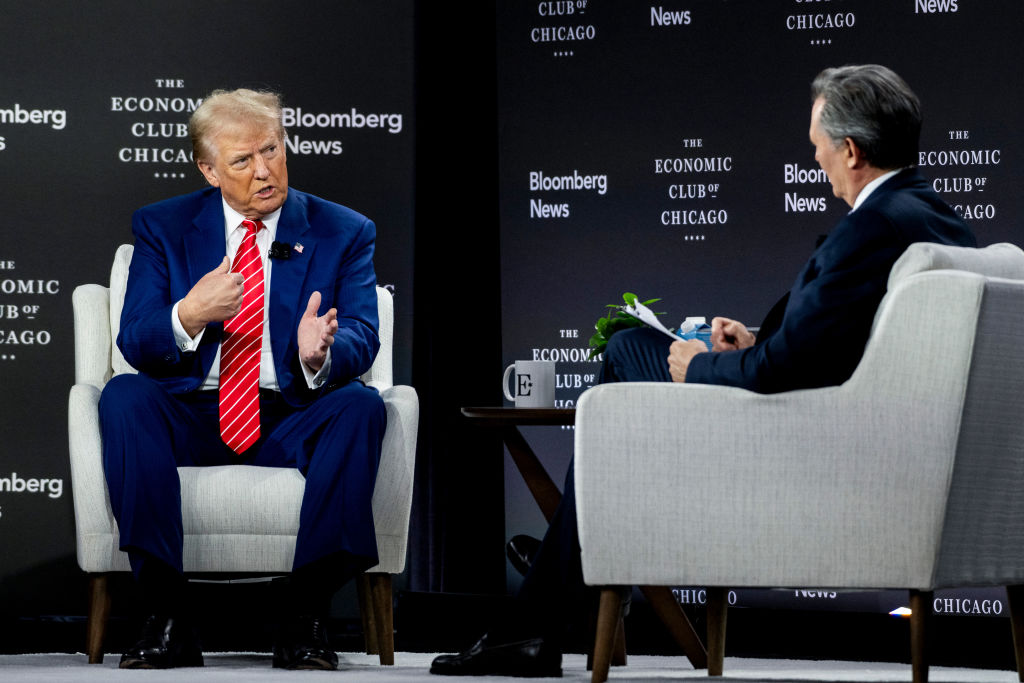
www.dailywire.com
Why The Left Is Willing To Do Anything They Can To Take Down Elon Musk
Less than a week ago, as engineers at SpaceX prepared to achieve something that had never been done before in human history, a dozen bureaucrats at the California Coastal Commission assembled to do something that’s been done many, many times before. The commissioners — a group that mostly consists of liberal women — set up a massive regulatory roadblock to impede people who are actually doing real, important work. And these commissioners established this roadblock in a way that made it extremely obvious to everyone that the root of their frustration was their own jealousy and bitterness.
The following clips come from a meeting of the California Coastal Commission to consider SpaceX’s plans to launch as many as 50 rockets every year from Vandenberg Space Force Base, which is located in Southern California’s Santa Barbara County. This is a plan that was formally proposed by the Air Force and the Space Force, because SpaceX is a military contractor — and everything SpaceX does either directly benefits the Defense Department, or more broadly advances the interests of this country. But the California Coastal Commission, in its infinite wisdom, disagrees. They voted down the proposal for more launches. So why did they do that, exactly?
Here’s one of the commissioners, Gretchen Newsom (no relation to Gavin Newsom), explaining her reasoning. Pay attention not only to what she says, but also how she says it. Watch:
Once all the crazy talks from the public are over, the even crazier talks from government officials start. Now it REALLY becomes clear as to what the actual reasons are.
Here is @GretchenNewsom spewing a load of bullshit about Starlink. The quoted post explains just how wrong… pic.twitter.com/iVqI9AP0jI
— Robin (@xdNiBoR) October 14, 2024
She’s practically snarling over the fact that Elon Musk provided internet access to people in a storm. This is internet access that the federal government denied these people, because the Biden-Harris administration cut Starlink out of a funding program for rural broadband access. And as you’d expect, many of these people voluntarily — and gratefully — accepted this internet access from Elon Musk in the aftermath of Hurricane Helene.
But somehow this is all a “sick ploy,” says Gretchen Newsom. And she makes that claim because, if they wanted Starlink, people had to pay a couple hundred dollars for the Starlink unit — the normal cost of the device — followed by a monthly fee after 30 free days of service (which has since been extended, for free, to the end of 2024). In other words, according to the California Coastal Commission, it’s not enough for Elon Musk to swoop in and provide basic services that the Biden administration failed to provide. He also has to do it for free. And if he doesn’t, the government will retaliate against him by blocking permits to launch rockets.
There’s so much to going on in that clip, it’s not even clear where to begin. But I wanted to start with Starlink, because it highlights the anti-human ideology that’s consumed so much of the Left. They don’t care if Elon Musk is saving lives in disaster zones in states like North Carolina. They don’t care if people are voluntarily paying him money so that they can access a vital service like the internet. They only care about damaging Elon Musk as much as possible.
And from that clip, it’s pretty clear why they want to damage Elon Musk. Gretchen Newsom says that Musk has made “bigoted” remarks about the “transgender community.” She claims he’s “spewing and tweeting political falsehoods about FEMA.” First of all, it would be hard to imagine a more direct and obvious violation of the First Amendment than these statements. Elon Musk has already said he’s suing the California Coastal Commission over this, and he absolutely should. On top of that, the things Elon Musk was saying are true. Men can’t become women. And FEMA did waste more than a billion dollars on services for illegal migrants. If the Constitution protects anything, it’s statements like these.
That’s how the Constitution is written, anyway. But obviously that’s not how things work in places that are run exclusively by Democrats, like California. We saw that just a couple of weeks ago, when the governor, Gavin Newsom, tried to ban satire and memes. He didn’t like how people on social media were talking about Kamala Harris being a DEI hire, so he tried to outlaw it. He just came right out and said it. And Gretchen Newsom (again, no relation, surprisingly enough) has taken the exact same approach, right out in the open.
There are a few other things that Gretchen Newsom said that I could quibble with. For example, no, Musk isn’t requesting “government support.” This meeting, again, is about a request by the Air Force and Space Force for the California Coastal Commission to get out of the way. No one wants the “support” of this commission. They want this commission to stop bothering them. Of course, technically, the military can override this commission if it wants to. But right now they’re working to find some kind of compromise solution. That may not last for very long, though.
That’s because it’s not just Gretchen Newsom who thinks like this. The majority of the Coastal Commission in California is the same way. Here for example is Caryl Hart, the chair of the Commission. And this clip may be even more embarrassing than the previous one. Watch:
Next, here is Dr. Hart, the chair of the CCC, forgetting about Mathew Dun and she has to be interrupted. I think this shows how much she cares and how much attention she pays to everything.
She's also scared about her position. Lol. pic.twitter.com/JKHDvIQsjK
— Robin (@xdNiBoR) October 14, 2024
So she tries to ding SpaceX for not showing up on Zoom during the meeting. And then she’s told that, in fact, SpaceX did show up by Zoom. In fact, someone named Mathew Dun, the Director for Government Affairs at SpaceX, gave a whole presentation. He explained that SpaceX is currently supporting the Defense Department, Boeing and NASA. He pointed out that SpaceX is the only operational U.S. provider for astronaut transportation to the International Space Station — which is kind of a big deal, because astronauts are trapped up there at the moment. He went into detail about how Starlink assists the Pentagon, in addition to disaster victims.
But somehow, the chair of the California Coastal Commission missed all of this. And when she’s informed that SpaceX had shown up and done a whole presentation, she instantly waves it off. She says it wasn’t enough for her. So obviously, she made up her mind long before this hearing. And again, it’s clear what she’s really upset about. She complains that Musk has, “aggressively injected himself into the presidential race and made it clear what his point of view is.” So, in other words, he’s exercised his First Amendment rights in a way that the California Coastal Commission doesn’t approve of.
For good measure, Caryl Hart also complains that Musk has, “managed the company” in a way that’s “very disturbing.” It’s hard to know exactly what that’s a reference to. Maybe she’s complaining about that lawsuit by some former SpaceX employees, which accused Musk of posting insensitive memes on X. Those memes were allegedly very traumatizing to these employees — particularly the meme depicting Bill Gates as a pregnant man emoji. It’s very disturbing stuff.
Or maybe she’s referring to how SpaceX was fined several hundred thousand dollars because of alleged “launch license violations” last year — even though those “launch license violations” wouldn’t have been violations at all, if the FAA had responded to SpaceX’s various applications in time. Maybe that’s what the commissioner finds “disturbing.”
Or maybe she’s talking about how SpaceX is doing things that no one has ever done before in all of human history. Maybe she finds that disturbing. Maybe she doesn’t see any benefit to reusable rockets, or colonizing Mars, or rapidly deploying satellites to provide internet access to millions of people. Maybe the idea of human progress upsets this particular bureaucrat. That would explain a lot.
You can go through the whole hearing and you won’t find a serious explanation for the commission’s ultimate vote, which was to deny SpaceX the additional launches. But you will find a lot of hysteria.
There’s a user on X using the handle “Robin” who assembled some of the better examples. Here’s two of them. The first clip is a commissioner named Dayna Bochco, who announces that the Air Force and Space Force are wrong, and that really, SpaceX has nothing to do with our national defense. She just comes out and unilaterally declares that SpaceX doesn’t benefit the government in any way. She knows more than the Pentagon and all of the engineers on this point. Watch:
The second clip is a woman — a member of the public — complaining about sonic booms from the launches. Watch:
Then, we have this absolute gem. She doesn't think that the launches are needed for the federal government or defense. pic.twitter.com/mhT7mDkaKV
— Robin (@xdNiBoR) October 14, 2024
This next clip is a woman — a member of the public — complaining about sonic booms from the launches. Watch:
I suppose we shouldn't expand humanity's presence in space because Leah finds a sonic boom 'terrifying' and claims she 'felt it through my bones.'
Then she talks about the recent landing failure as if that has anything to do with it. ? pic.twitter.com/5gRxlKgfk0
— Robin (@xdNiBoR) October 14, 2024
There’s all sorts of back-and-forth on this sonic boom issue. SpaceX disagrees on how many of these booms are audible in populated areas, and how loud they are, and so on. But let’s just put all that aside for a moment. Let’s concede, for the purposes of argument, that every now and then there’s briefly a loud noise from a SpaceX launch, and that some people can hear it for a second or two. In what universe does this justify denying SpaceX the ability to launch rockets at all?
This would be like denying construction crews the ability to work, at all, at any time. Imagine if people like this had their way during any other significant moments in this country’s history. Imagine if someone like that lady was bothered by all the noise they were making in Los Alamos, and had the Manhattan Project shut down. Imagine being the kind of person who hears a couple seconds of a sonic boom, and feels “terrified” as a result. When this woman says “sonic boom,” this is what we’re talking about here, to give you some idea. Watch:
Tracking footage of Falcon 9’s first stage booster landing and sonic boom pic.twitter.com/HNohw3oCCp
— SpaceX (@SpaceX) August 5, 2024
So the rocket makes a loud noise — that’s reason number 10,000 to shut down SpaceX, apparently. And I haven’t even gotten into the DOJ’s lawsuit against SpaceX for not hiring enough “asylum seekers,” which is what they’re calling illegal aliens now. And of course, the European Union has about a million of their own issues with SpaceX as well.
The only positive thing to come out of this pathetic meeting at the California Coastal Commission is that it established, by sheer contrast, how useless all of these “regulators” and critics really are. They couldn’t have picked a worse day to hold this hearing. Less than a week later, Elon Musk demonstrated that unlike his critics, his companies are actually accomplishing things. They’re benefiting humanity in very real and tangible ways. It’s maybe the least flattering juxtaposition in the history of juxtapositions. On the one hand, you have useless, bitter bureaucrats trying to slow human progress. And on the other hand, you have this:
Starship rocket booster caught by tower pic.twitter.com/aOQmSkt6YE
— Elon Musk (@elonmusk) October 13, 2024
What SpaceX just accomplished will make interplanetary travel — in particular travel to Mars — an order of magnitude cheaper. They proved that they can catch their rocket boosters in-mid air. They also proved that they can precisely land the ship itself in the water. As Elon Musk put it last night, when you can re-use extremely expensive equipment like this, and then rapidly re-deploy it, you make it literally 1,000 times easier and less expensive to colonize a planet like Mars. And when you’re talking about trillions of dollars, that’s a big difference. It’s the difference between colonizing Mars and staying on this planet forever.
The reason Musk’s critics don’t care about this is that, when you get down to it, they’re not just bitter and jealous and unhappy. They’re also anti-human. They don’t want humans to colonize another planet anymore than they want humans to have free speech on the internet, or to reproduce above replacement level. Pretty much the only issue these people are passionate about is abortion, because it means fewer humans will exist.
That’s why Joe Biden and Kamala Harris didn’t bother to congratulate Elon Musk or SpaceX on their achievement, even though it altered the trajectory of civilization forever. It’s why they’re engaging in open lawfare to shut his companies down. These people do not want to save this country, or civilization for that matter. They want to destroy it. And they’ll complain about any pretext imaginable — whether it’s “sonic booms” or “launch licenses” or “hiring asylum seekers” — in order to achieve that end.
The only reasonable response is to dismantle the vast web of bureaucratic agencies like the “California Coastal Commission” along with the Biden-Harris administration. This election isn’t really even about Democrat or Republican anymore. It’s a choice between unimpressive, profoundly cynical bureaucrats, and people who advance civilization in meaningful ways. After what SpaceX accomplished this week, that fundamental distinction is now clear to everyone with an internet connection or a television. That’s what they’re actually upset about. And it’s why, in just a few weeks, there’s a very good chance they’re going to lose the power that they never deserved to have in the first place.
















